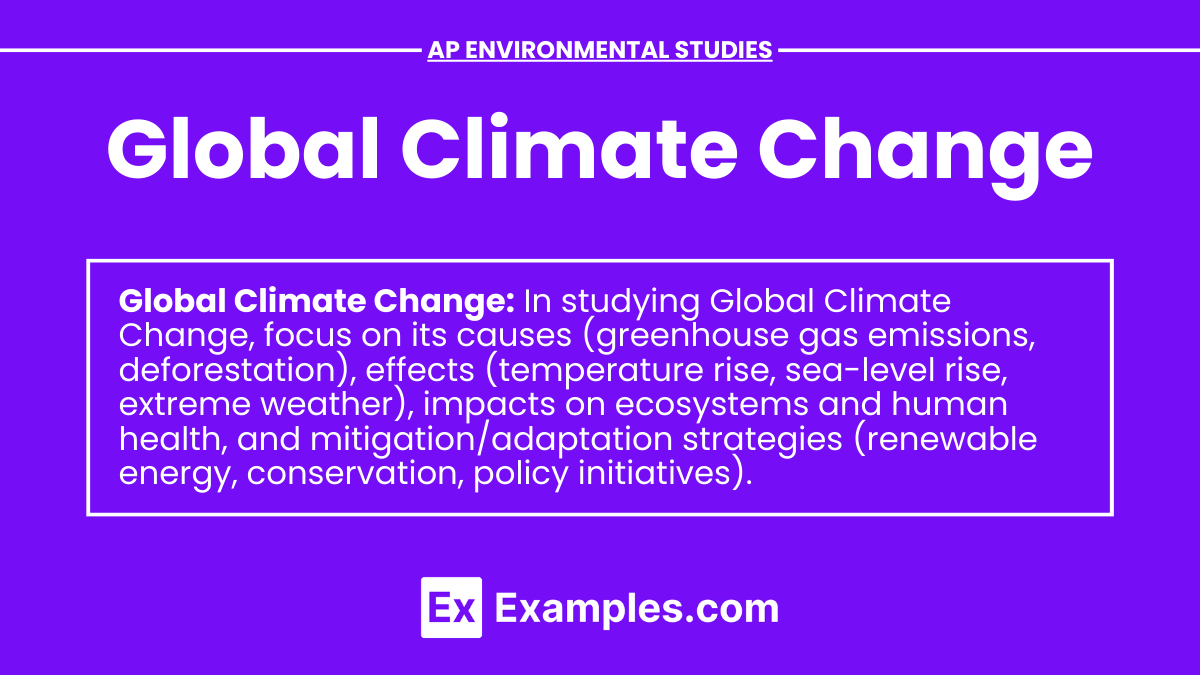In AP Environmental Science, understanding global climate change is essential as it profoundly impacts ecology, ecosystems, biodiversity, and the biosphere. The rapid alteration of climate patterns due to human activities, such as greenhouse gas emissions, affects the delicate balance of our ecosystems. These changes threaten biodiversity, disrupt ecological interactions, and pose significant risks to the health and stability of the biosphere. Addressing climate change is crucial for sustaining life on Earth.
Learning Objectives
By studying global climate change, students will understand its impact on organisms, including flora and fauna, and how it drives climate changes. They will explore the causes and consequences of these changes on natural systems and human societies. Students will also learn about mitigation and adaptation strategies to protect organisms and ecosystems. This knowledge will equip them to develop solutions that address the effects of climate changes on flora and fauna.
Causes of Global Climate Change
Natural Causes
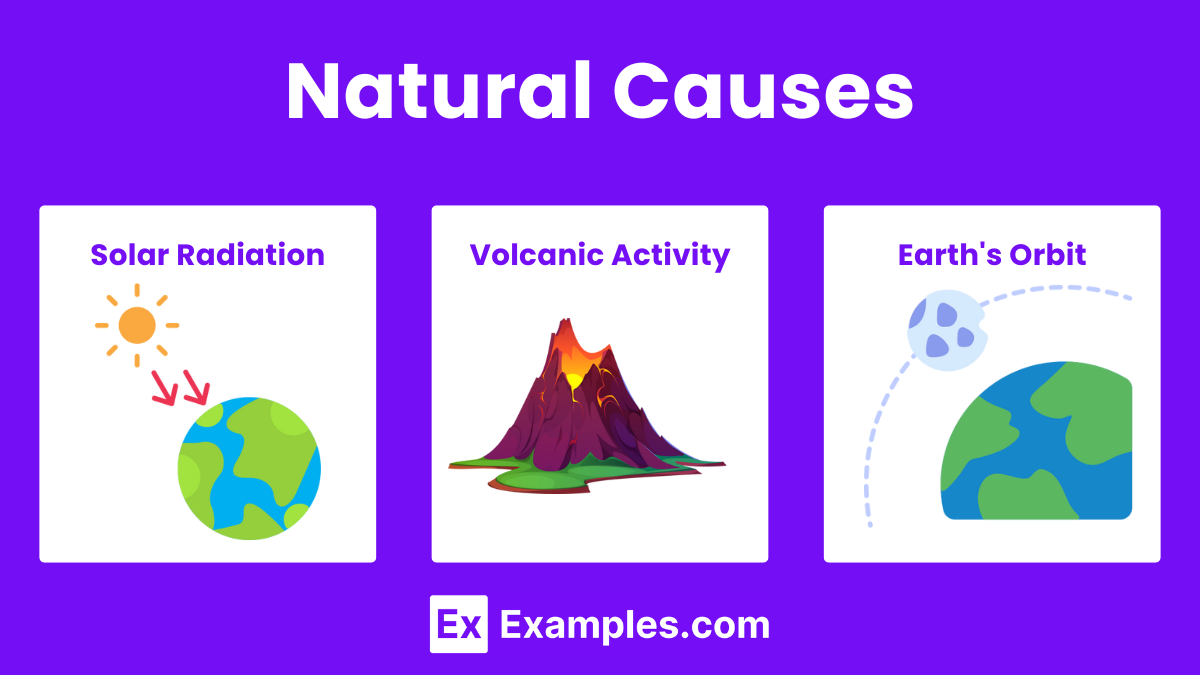
Solar Radiation
- Solar Cycles: Variations in solar energy output affect Earth’s climate.
- Sunspots: Increase in sunspot activity correlates with higher solar radiation.
Volcanic Activity
- Aerosols: Volcanic eruptions release sulfur dioxide (SO₂) and particulates, which can cool the Earth’s surface temporarily by reflecting sunlight.
- Greenhouse Gases: Some eruptions release carbon dioxide (CO₂), contributing to the greenhouse effect.
Earth’s Orbit
- Milankovitch Cycles: Changes in Earth’s orbit and tilt affect the distribution of solar energy, influencing long-term climate patterns.
Anthropogenic Causes
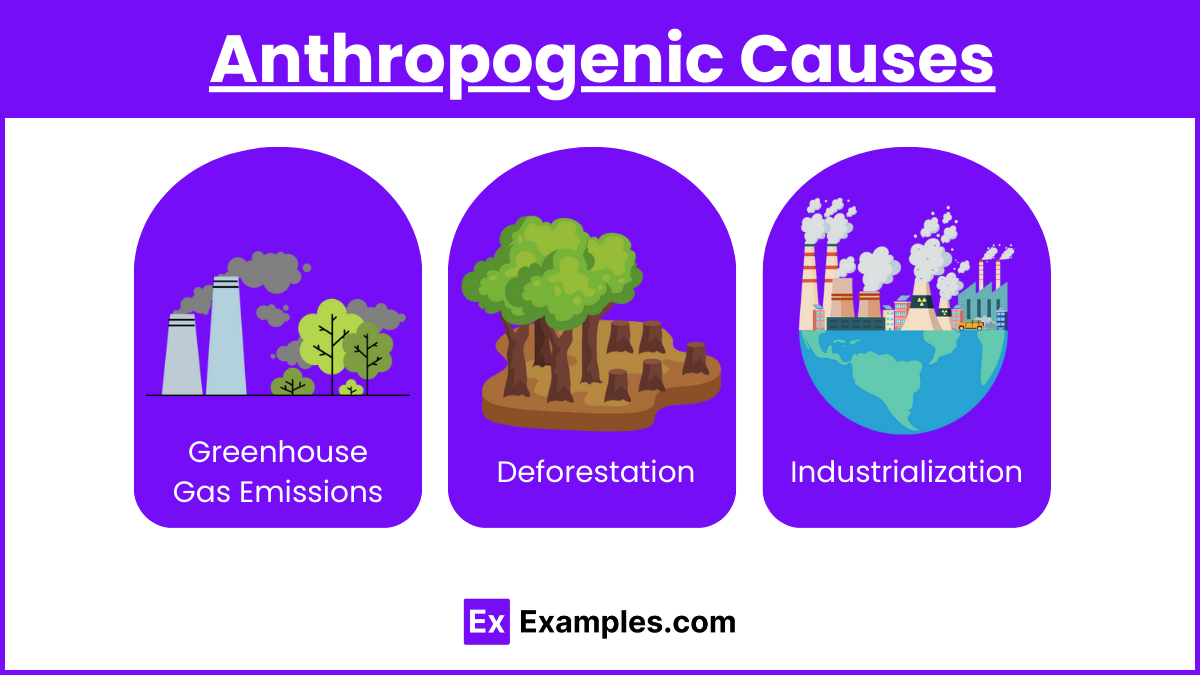
Greenhouse Gas Emissions
- Carbon Dioxide (CO₂): Produced by burning fossil fuels (coal, oil, natural gas), deforestation, and industrial processes.
- Methane (CH₄): Released from agriculture (rice paddies), livestock digestion, landfills, and fossil fuel extraction.
- Nitrous Oxide (N₂O): Emitted from agricultural activities, industrial processes, and combustion of organic matter and fossil fuels.
- Chlorofluorocarbons (CFCs): Synthetic compounds used in refrigeration, air conditioning, and aerosol propellants, also contribute to ozone depletion.
Deforestation
- Carbon Sink Loss: Trees absorb CO₂; their removal reduces this capacity, increasing atmospheric CO₂ levels.
- Burning of Biomass: Releases stored carbon as CO₂ and other greenhouse gases.
Industrialization
- Energy Production: Fossil fuel combustion for electricity and heat.
- Manufacturing: Release of CO₂, CH₄, and N₂O from various industrial processes.
- Transportation: Emissions from vehicles and aviation contribute significantly to CO₂ levels.
Effects of Global Climate Change
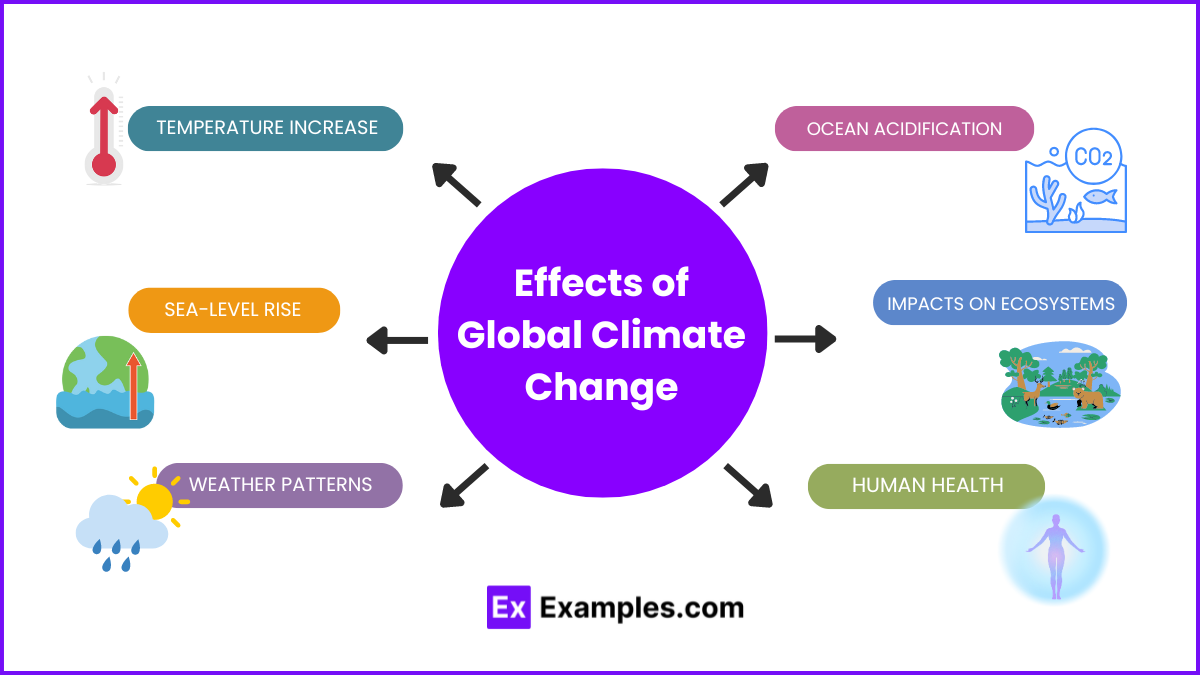
Temperature Increase
- Global Warming: Rise in average global temperatures, causing more frequent and intense heatwaves.
- Polar Ice Melt: Accelerated melting of glaciers and ice caps, contributing to sea-level rise.
Sea-Level Rise
- Thermal Expansion: Water expands as it warms, contributing to rising sea levels.
- Glacial Melt: Addition of water from melting glaciers and ice sheets.
Weather Patterns
- Extreme Weather: Increased frequency and severity of hurricanes, storms, droughts, and floods.
- Precipitation Changes: Altered rainfall patterns, leading to wetter or drier conditions in different regions.
Ocean Acidification
- CO₂ Absorption: Oceans absorb a significant portion of atmospheric CO₂, forming carbonic acid and lowering pH levels.
- Impact on Marine Life: Acidification affects shell-forming organisms (corals, mollusks), disrupting marine ecosystems.
Impacts on Ecosystems
- Habitat Loss: Shifts in climate zones lead to loss of habitats for many species.
- Biodiversity Decline: Species unable to adapt or migrate face increased risk of extinction.
- Phenological Changes: Altered timing of biological events (migration, breeding, flowering).
Human Health
- Heat-Related Illnesses: Increased risk of heatstroke, dehydration, and cardiovascular issues.
- Vector-Borne Diseases: Expansion of habitats for disease vectors (mosquitoes, ticks), spreading diseases like malaria, dengue, and Lyme disease.
- Food and Water Security: Impacts on agriculture and freshwater availability, leading to potential food and water shortages.
Mitigation and Adaptation Strategies
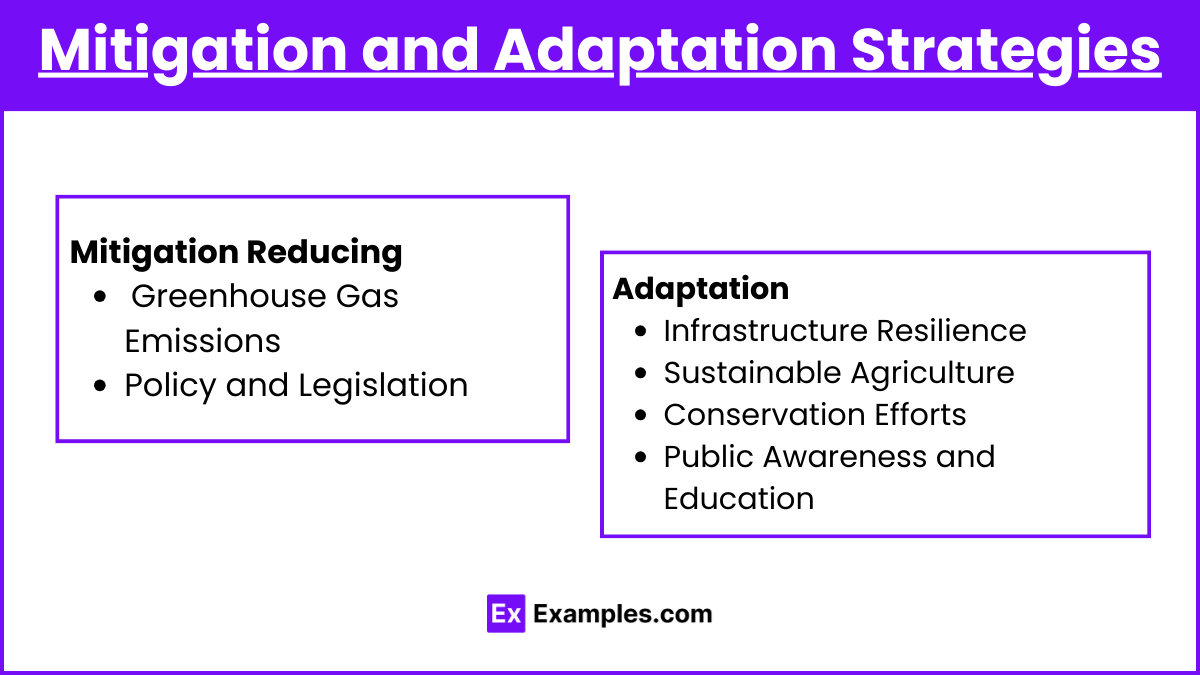
Mitigation
Reducing Greenhouse Gas Emissions
- Renewable Energy: Transition to solar, wind, hydro, and geothermal energy sources.
- Energy Efficiency: Improving energy use in buildings, transportation, and industries.
- Carbon Sequestration: Capturing and storing CO₂ from the atmosphere or point sources.
Policy and Legislation
- International Agreements: Paris Agreement aims to limit global warming to below 2°C above pre-industrial levels.
- Carbon Pricing: Implementing carbon taxes or cap-and-trade systems to incentivize emission reductions.
- Regulations: Setting standards for vehicle emissions, industrial processes, and energy production.
Adaptation
Infrastructure Resilience
- Flood Defenses: Building levees, seawalls, and improved drainage systems.
- Climate-Resilient Buildings: Designing buildings to withstand extreme weather events.
Sustainable Agriculture
- Drought-Resistant Crops: Developing and planting crops that can withstand changing climate conditions.
- Water Management: Efficient irrigation systems and water conservation practices.
Conservation Efforts
- Protected Areas: Establishing and maintaining reserves to protect vulnerable species and habitats.
- Restoration Projects: Reforestation, wetland restoration, and other ecosystem recovery initiatives.
Public Awareness and Education
- Community Engagement: Involving local communities in climate action plans.
- Education Programs: Informing the public about climate change and sustainable practices.

